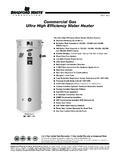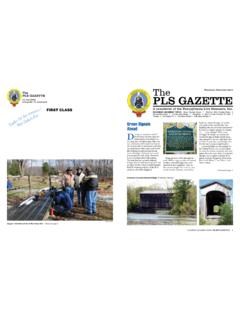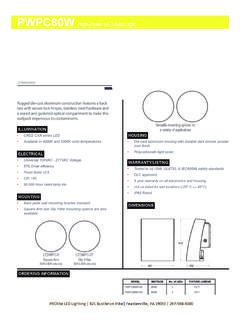Transcription of Ontario gets tough on energy effi ciency
1 Ow happy would you be if you bought a new car knowing that in just two more years, the same model would instantly have 35% better fuel economy?That s the dilemma facing today s new home buyers, only on a much bigger scale. The latest revisions to Ontario s Building Code kick in after January 1, 2012, introducing sweeping changes to residential construction, particularly as it relates to energy effi to the Ministry of Municipal Affairs and Housing, homes built in 2012 will be 35% more effi cient than when the OBC was last overhauled in 2006.
2 All homes with building permits applied for in 2012 and beyond will be subject to the new 80: What it meansSo how is the Building Code expected to achieve such signifi cant improvements in effi ciency ? Quite simply by adding actual performance criteria to the Code: Ontario will join British Columbia as the second province to mandate an EnerGuide 80 energy effi ciency 80 refers to a rating on the 100-point EnerGuide Rating System scale, administered by National Resources Canada s Offi ce of energy Effi ciency (NRC OEE).
3 A zero represents a home with major air leakage, no insulation and extremely high energy consumption. On the other end of the scale, a rating of 100 represents a house that is airtight, well insulated, suffi ciently ventilated and requires no purchased energy on an annual basis. A rating is only awarded when a home is fully constructed, after a certifi ed energy advisor inspects the house to verify any energy effi cient upgrades and performs a blower door test. Using collected data and energy simulation software, a rating will be issued, complete with an EnerGuide label for the homeowner to affi x to the electrical panel EnerGuide 80 is quite a departure for Ontario s Building Code.
4 Traditionally, building codes mandate specifi c material inputs (for example R-19 insulation for exterior walls) and construction methods. Now for the fi rst time, the code looks at the house as a full system, after (not during) construction. It s a bold new approach that acknowledges a key principle of building science: that energy usage is a complex interdependency of many factors, such as insulation , building envelope design, windows, heating/cooling systems, air tightness and 80: Is it practical?
5 How practical is the EnerGuide 80 approach? Despite the fact that many foresighted builders have been promoting and building to EnerGuide ratings for years, the building industry as a whole opposed the E80 requirement from the outset. The Ontario Homebuilders Association argued that the new regulation was not going to give municipalities, builders and consumers the kind of surety that they have come to expect from the Building Code. The Canadian Homebuilders Association was even blunter: The CHBA strongly opposes the use of the ERS as a regulatory tool for new homes, incorporated into provincial building codes.
6 Ontario gets tough on energy effi ciencyWith EnerGuide 80 set to become Building Code standard in 2012, SIPs offer solutions to home builders and buyers alikeHEnerGuide Effi ciency Ratings Type of House Rating New house build to building code standards 65-72 New house with some energy -effi ciency improvements 73-79 energy -effi cient new house 80-90 House requiring little or no purchased energy 91-100 Source: National Resource Canada s Offi ce of energy Effi ciencyEnerGuide for New Houses is a trademark of Natural Resources Canada..you need to ensure that your new home is built to the newest standards; otherwise your investment is at risk.
7 Reading between the lines, how could a builder be absolutely certain any new build would reach an 80 rating? What if a new house only measured a 79? Would that home not be to code ? The Ministry itself admitted that should the rating achieved fall below 80, it is unclear what remedial measures, if any, can be incorporated to ensure the building meets the minimum provisions of the Building Code. And with only a handful of Certifi ed energy Advisors listed on NRC s web site, how could they possibly manage to audit the tens of thousands of new homes built each year across the province?
8 Enter the prescriptive standards amendment. In late 2009, the Ministry of Municipal Affairs and Housing introduced an alternative stream for compliance. If a builder chose not to take their chances on an EnerGuide study, they could follow a series of guidelines designed to substantially comply with E80 standards. This approach was much more familiar to builders, since it specifi es precise materials and methods during the building wall insulation , for example, must be rated at R-24 to R-29 (depending on which of the 10 compliance packages is used), a signifi cant jump from the current standard of R-19.
9 The prescriptive path provides experienced and less-experienced builders alike the kind of detailed guidance they may need to build better performing building by the experience in , the vast majority of home builders in Ontario are expected to build to the prescriptive path, not the EnerGuide 80 performance and beyond: what should you do?Any debate on the merits of performance vs. prescriptive is moot. The changes to the code come into effect on January 1, 2012, and whichever path builders take, new homes across Ontario will be much more energy effi cient than their predecessors.
10 With escalating energy costs, depleting fossil fuel resources and climate change, the 2012 OBC changes are more than what should a prospective new homeowner do with 2012 on the horizon? Well the most important thing is get a jump on the upcoming OBC. Just like the new car analogy in the opening of this article, you need to ensure that your new home is built to the newest standards; otherwise your investment is at risk. Beyond the immediate and ongoing savings from living in a more effi cient home, the resale potential of a 2012-compliant home is considerably higher than the equivalent home built to 2011 standards.









